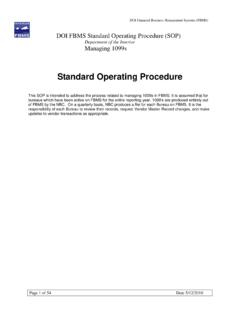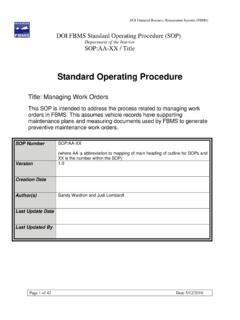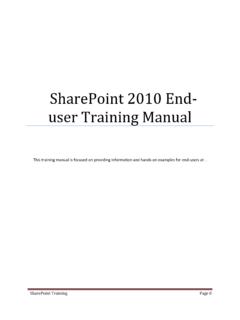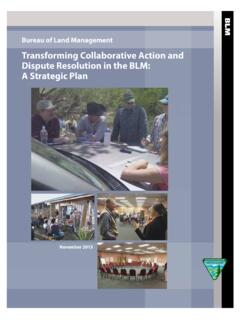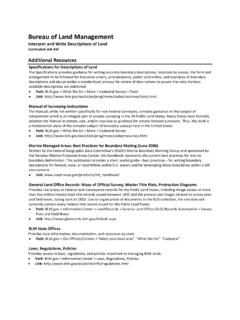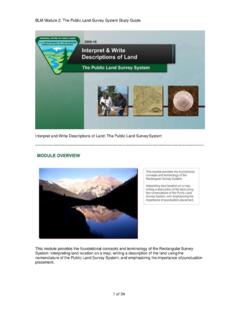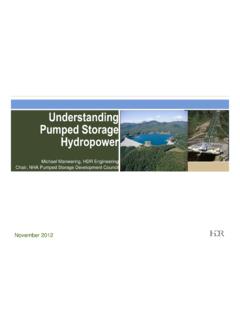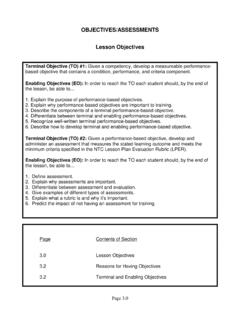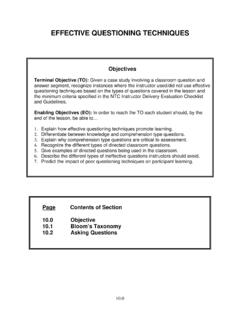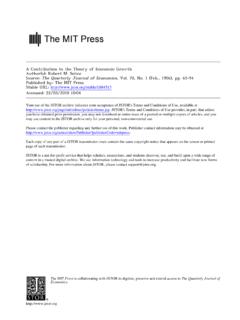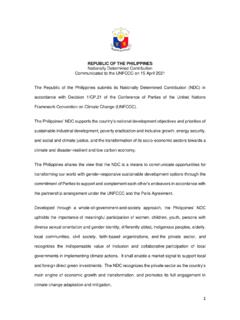Transcription of Determining Economic Contributions and Impacts: What is ...
1 Determining Economic Contributions and Impacts: What is the difference and why do we care? Philip Watson, Joshua Wilson, Dawn Thilmany, and Susan Winter NOAA Fisheries, USDA Forest Service, and Colorado State University - USA Abstract. Economic contribution and impact studies are common tasks for regional economists, but the semantics of the discipline suffer from a lack of standardization with respect to dif-ferences between Economic Contributions , impacts and benefits. These terms refer to 3 dis-tinct metrics which are useful for answering different questions and each has situations when their use is appropriate. This article provides a pedagogical and methodological framework for how and when these terms should be applied in the context of regional eco-nomic analysis. Past studies are reviewed and a standardized semantic is presented.
2 It is recommended that economists working in this field use a more explicit and unified termi-nology and methodology when conducting regional Economic analysis. 1. Introduction Researchers working in the field of regional eco-nomics are often asked to determine the Economic con-tribution, impact, or benefit of various industries, events, or policies in a given region. Local decision-makers come to regional economists seeking answers about how policy changes will affect their economy and use such numbers in the educational or political campaigns to inform policy decisions or garner sup-port for a specific position or business strategy. However, the terms contribution , impact , and benefit are often used interchangeably in these stu-dies and there is a great deal of confusion as to how these should be applied in a regional Economic analy-sis (Crompton 1993, Frechtling 1994, Aruna et al.)
3 1997, Moore and Barthlow 1998). This is particularly prob-lematic in situations that are political in nature, given that the inappropriate or inconsistent use of some terms may be misleading. Economic contribution, Economic impact, and Economic benefit are separate terms for distinctly different metrics and the analysis of each of these, taken separately, may all be perfectly reasonable studies to perform. Therefore, it is impera-tive that researchers be explicit in their terminology and methodology and that what constitutes a contri-bution, impact, or benefit in a study must be consistent across the discipline. The degree of variation in methods and semantics of regional and industry Economic analysis has con-founded the comparability and interpretation of re-sults (Hudson 2001). A great deal of the debate could be avoided if a well defined semantic were to be em-ployed for the science of regional Economic analysis and if practitioners were to explicitly state the type of analysis they are performing.
4 For the purposes of standardization and to foster greater credibility for applied research results with respect to Economic principles, the authors propose a terminology for re-gional and industry Economic assessment and then suggest when each is an appropriate method of re-search. 2. Case in Point The January 26, 2006, edition of the Missoulian newspaper (Missoula, Montana) ran an article that highlights the scope of the problem. The article re-ports how a consulting economist was forced to adjust down the estimate of the Economic impact of restoring wild salmon runs in Idaho after an independent re-JRAP 37(2):1-15. Pedagogy in Regional Studies 2007 MCRSA. All rights reserved. 16 Watson et al.
5 View of the study estimated the impact at $7 million, down considerably from the initial $544 million. How can two seemingly qualified economists arrive at such widely disparate numbers? Aside from simple disho-nesty or poor methodology, is it possible for two economists to, in good faith, come up with such differ-ent results. In fact, there are likely numerous cases where economists conduct distinctly different eco-nomic analyses with different methods but one may erroneously label the results as an Economic impact (or worse, an Economic benefit ) when it should la-beled an Economic contribution . The bulk of the $544 million dollars was estimated based on recreational fishing expenditures for the wild salmon. In the initial study all expenditures by all types of anglers, both local and non-local, were in-cluded.
6 No concessions were made for the fact that if local anglers go salmon fishing more often, they will likely do some other activities less often (such as trout fishing). Public policies that either promote or harm salmon habitat are not likely to have any affect on lo-cal resident s disposable income or total allotment of leisure time. Additionally, no adjustments for retail margins of fishing related expenditures and expendi-tures that were likely made outside the study area were included in the analysis. Not surprisingly, changing these assumptions can greatly alter the final answer obtained. What figures actually belong in this type of study depend greatly on how the researcher defines the terms in the study. Obviously, if a researcher takes credit for every dollar that can even remotely be linked to an activity, then that number will be higher than a researcher who conservatively includes only expenditures that constitute new dollars being brought into the region that would not otherwise exist.
7 What is appropriate to include depends largely on whether the analyst is conducting an Economic contri-bution analysis, an Economic impact analysis, or cost-benefit analysis. However, what is and is not included in a regional Economic assessment and whether a contribution, im-pact, or cost-benefit analysis is conducted is not al-ways simply a matter of preference. There are times when only one is the appropriate answer to the ques-tion at hand. Thus, it is the best practice to explicitly state what type of analysis is being performed and what is being included in the measure of direct effects and how the regional model is being estimated. The bulk of the issue centers on 1) what direct ex-penditures or values to include, 2) the appropriate me-thodology to perform the analysis of regional effects (such as input-output, computable general equili-brium, social benefit/cost ratio, net present value, etc.
8 And 3) the geographic scale of the analysis. In-depth discussion of techniques for choosing the appropriate estimation methodology and geographic scale are beyond the scope of this paper (see Miller and Blair 1985, Davis 1990, or Shaffer et. al 2004 for more discus-sion of methods). Consequently, the discussion will be limited to what types of expenditures are appropri-ate for inclusion as direct effects in different types of regional Economic analysis. To this end it would be beneficial if regional scien-tists would agree on a tightened definition for what constitutes a regional Economic contribution or impact and how these differ from an Economic benefit. The goal of this paper, then, is to provide a semantic for regional Economic analyses and describe the different expenditures that belong in each of these types of stu-dies.
9 3. Definitions For the purposes of clarity, standardization, and conformity to regional science, the authors propose the following terminology for regional Economic analysis (Table 1). The terminology initially diverges into two broad distinctions, those that measure Economic activ-ity and those that measure Economic benefits. Eco-nomic activity measures actual expenditures and how those cycle through the region s economy. The first three terms: Economic contribution, regional gross domestic product (GDP), and Economic impact, are all different measures of Economic activity. The term Economic benefit is not solely a measure of Economic activity, but rather a measure of social welfare. This paper will focus primarily on measures of Economic activity and will only touch on Economic benefits in order to distinguish them from the former.
10 Economic Contribution The term Economic contribution will be used to address the broader and more general case of the how the Economic activity cycles through the region s exist-ing economy. An Economic contribution is defined as the gross changes in a region s existing economy that can be attributed to a given industry, event, or policy. If the analysis is to be performed with a standard In-put-Output Model (IOM) then the appropriate meas-ure of Economic activity is total final demands (Miller and Blair 1985). If the analysis is to look at the effects of changes in output of an industry rather than final demands, then a Mixed Exogenous/Endogenous Va-riables Input-Output Model or an appropriately speci- Economic Contributions and impacts 17 Table 1.
